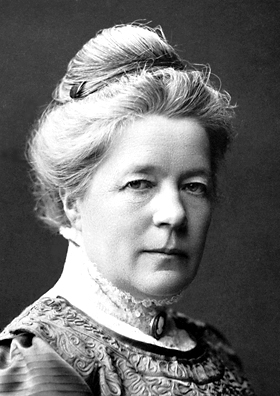The Rattrap Summary - Themes, Q&A, and Character Sketch

Table of Contents
- The Rattrap Summary
- Understanding the text - The Rattrap Summary
- Talking about the Text – Suggested Group Discussion Points
- Working with Words - The Rattrap
- Noticing Form - The Rattrap
- Thinking about Language - The Rattrap
- About the Author
- Character Sketch of The Rattrap
- Theme of The Rattrap
- Readers Also Read
- About PlanetSpark
- Conclusion
- FAQs – The Rattrap
The Rattrap by Selma Lagerlöf is a thought-provoking short story from the Class 12 English Flamingo textbook. It beautifully blends philosophy with human emotions, showing how kindness has the power to transform even the most flawed individuals. The story follows a poor peddler who views the world as a giant rattrap filled with temptations like wealth and comfort, only to realize that compassion can set people free from this trap.
In this blog, you will find the complete summary of The Rattrap, along with insights into its themes, characters, and moral lessons. This will help you not only understand the story better but also prepare effectively for your Class 12 English exams.
The Rattrap Summary
1. The Peddler and His Philosophy
The story begins with a poor vagabond who survives by making and selling small rattraps. Since his business does not bring him enough money, he often resorts to begging and stealing. His life is full of misery, poverty, and loneliness. One day, while reflecting on his struggles, he develops a strange philosophy: the whole world is like a rattrap. Just like a rattrap tempts rats with bait, the world offers riches, pleasures, and comforts to trap human beings. Once someone falls for these temptations, they are caught and cannot escape.
Discover the Magic of Literature!
Sign up for a free trial class and explore more classic stories with expert guidance.
2. The Crofter’s Kindness and Betrayal
One cold evening, the peddler seeks shelter at a small cottage owned by an old crofter who lives alone. The crofter treats him with kindness, sharing food, tobacco, and companionship. He even tells the peddler about his cow that gives him milk and shows him the thirty kronor he has earned from selling the milk. The next day, after leaving the cottage, the peddler returns, breaks a window, and steals the crofter’s money.
3. Lost in the Forest – The Real Rattrap
After stealing the money, the peddler avoids the main road and wanders into a thick forest. But the forest is like a real trap — he keeps walking in circles, unable to find his way out. At this moment, he realizes that he himself has fallen into the world’s rattrap, tempted by the bait of money. His earlier philosophy suddenly feels true in his own life.
4. At the Iron Mill – Mistaken Identity
Exhausted, the peddler hears hammer strokes from the Ramsjö Ironworks and follows the sound to the forge. The blacksmiths allow him to rest there. Soon, the ironmaster arrives and mistakes the ragged peddler for an old acquaintance, Captain Nils Olof. The peddler, seeing a chance for shelter, does not reveal the truth but refuses to go to the ironmaster’s house. Later, the ironmaster’s daughter, Edla Willmansson, visits the forge and persuades him kindly to come home with her for Christmas.
5. Edla’s Compassion
Unlike her father, Edla treats the peddler with genuine kindness and respect. She assures him that he is free to leave anytime and promises he will not be mistreated. The peddler, touched by her sincerity, agrees to stay. On Christmas Eve, he is bathed, dressed in fine clothes, and treated as a guest. However, when the ironmaster realizes his mistake, he becomes angry and wants to throw the peddler out. It is only Edla’s compassion and insistence that convinces her father to let the stranger stay for Christmas.
6. The Christmas Miracle
The peddler enjoys peace, warmth, and kindness at Edla’s home. The next morning, the ironmaster and Edla learn in church that a peddler had robbed the crofter. Fearing the worst, they rush home, but instead of theft, they find that the peddler has left behind a small gift for Edla. Inside a rattrap are the thirty kronor he had stolen, along with a note. In the letter, he thanks Edla for treating him like a real human being and signs it as “Captain von Stahle,” showing that her kindness has redeemed him and given him dignity.

Learn Through Stories!
Join PlanetSpark’s free demo to make learning fun and meaningful using engaging tales.
Understanding the text - The Rattrap Summary
1. How does the peddler interpret the acts of kindness and hospitality shown by the crofter, the ironmaster and his daughter?
The peddler initially misinterprets the crofter’s kindness as an opportunity to steal his thirty kronor. He views it as a weakness rather than genuine generosity. With the ironmaster, he believes the hospitality is based on mistaken identity and fears it will end once the truth is known. However, Edla’s kindness is different, it is genuine, compassionate, and without conditions. She treats him with dignity even after knowing his true identity, and this unconditional goodness finally awakens his conscience.
2. What are the instances in the story that show that the character of the ironmaster is different from that of his daughter in many ways?
The ironmaster is impulsive and practical, quick to judge by appearances. He mistakes the peddler for his old friend and invites him home out of pride and loneliness.
When he realizes his mistake, he becomes harsh and wants to throw the peddler out, showing his superficiality.
In contrast, Edla is gentle, thoughtful, and compassionate. She persuades the peddler to join them without force, offers him freedom, and treats him with respect. Her warmth and empathy, unlike her father’s conditional kindness, bring about the peddler’s transformation.
3. The story has many instances of unexpected reactions from the characters to others’ behaviour. Pick out instances of these surprises.
The crofter unexpectedly welcomes the peddler warmly, offering food, tobacco, and shelter instead of showing suspicion.
The peddler, despite this kindness, surprisingly betrays him by stealing the thirty kronor.
The ironmaster mistakes the ragged peddler for an old friend, which surprises the peddler himself.
Edla’s unexpected compassion after learning his real identity shocks the peddler, who had always been mistrusted by society.
Finally, the greatest surprise is the peddler’s redemption, instead of stealing from the ironmaster, he leaves the stolen money behind with a heartfelt note.
4. What made the peddler finally change his ways?
The genuine compassion and respect shown by Edla Willmansson made the peddler change his ways. Unlike others, she treated him with dignity, welcomed him as a guest, and trusted him even after knowing his real identity. Her kindness touched his heart, awakening the good in him and inspiring him to return the stolen money. He signed his farewell note as Captain von Stahle, symbolizing his moral transformation.
5. How does the metaphor of the rattrap serve to highlight the human predicament?
The rattrap symbolizes the temptations of life: wealth, power, and pleasures that lure human beings into a trap. Just like rats are caught when they go for bait, people get trapped by their own greed and desires. The peddler himself falls victim to this when he steals the crofter’s money and loses his way in the forest. The metaphor emphasizes that the world offers illusions of happiness, but only compassion and kindness can free us from this trap.
6. The peddler comes out as a person with a subtle sense of humour. How does this serve in lightening the seriousness of the theme of the story and also endear him to us?
The peddler often makes witty remarks that lighten the otherwise serious theme of poverty and redemption. For example, when the ironmaster accuses him, he cleverly responds that the world itself is a big rattrap and everyone can get caught in it. His self-deprecating humour, even in difficult situations, shows his intelligence and resilience. This subtle humour makes him more relatable and human, helping readers sympathize with him despite his flaws.

Talking about the Text – Suggested Group Discussion Points
1. Why was Edla happy to see the gift left by the peddler?
Edla felt relieved and happy because her trust in the peddler was not betrayed.
The gift, the rattrap with the stolen money inside, showed that her compassion had transformed him.
It justified her decision to treat him with respect despite her father’s doubts.
For Edla, it was proof that kindness can awaken goodness in people.
2. Why did the peddler sign himself as Captain von Stahle?
The peddler used this name because he wanted to live up to the respect and dignity Edla had shown him.
By calling himself Captain von Stahle, he accepted the new identity of an honourable man, leaving behind his old life of theft and deceit.
It was also his way of showing gratitude, as Edla’s kindness gave him the courage to believe he could be more than a poor peddler.
3. The reader’s sympathy is with the peddler right from the beginning of the story. Why is this so? Is the sympathy justified?
Readers sympathize with him because of his miserable condition: poverty, loneliness, and constant rejection.
Even when he steals, we understand that it comes from desperation, not pure malice.
His wit and subtle humour make him more human and relatable.
The sympathy is justified because he ultimately redeems himself, showing that every person has the potential for goodness.
4. The story also focuses on human loneliness and the need to bond with others.
The peddler’s life is full of isolation, wandering aimlessly with no family, friends, or support.
The crofter too is lonely, which is why he welcomes the peddler so warmly.
The ironmaster invites the peddler home because of his own loneliness on Christmas Eve.
Edla’s genuine compassion highlights how bonding with others can bring about trust, hope, and transformation.
5. Have you known/heard of an episode where a good deed or an act of kindness has changed a person’s view of the world?
Students can share real-life examples, like stories of criminals who reformed due to kindness shown in prisons, or personal experiences of being helped by strangers.
Example: Mahatma Gandhi once changed his entire outlook after being thrown out of a train in South Africa, an act of cruelty that made him determined to fight injustice peacefully.
Such examples reinforce the message that kindness and empathy have the power to transform lives.
6. The story is both entertaining and philosophical.
Entertaining: The twists such as the crofter’s hospitality, the theft, the peddler’s escape, and mistaken identity keep the reader hooked.
Philosophical: The metaphor of the rattrap gives a deep message about life, temptation, and human weaknesses.
The ending combines both. It surprises readers while also offering a moral lesson about compassion and redemption.
Working with Words - The Rattrap
1. The man selling rattraps is referred to by many terms such as “peddler, stranger” etc. Pick out all such references to him. What does each of these labels indicate of the context or the attitude of the people around him?
In the story, the man is described in several ways:
Peddler – shows his occupation of selling rattraps, but also reflects his low social and economic status.
Stranger – shows how others perceive him as an outsider, someone not belonging to their world.
Guest – when Edla invites him home on Christmas Eve, indicating dignity and respect despite his appearance.
Poor hungry wretch – reflects society’s pity as well as judgment on his miserable condition.
Thief – after he steals the crofter’s thirty kronor, showing how a single wrong act labels him negatively.
Captain von Stahle – the identity he gives himself in the end, symbolizing transformation and the respect he earns through Edla’s kindness.
Each label mirrors the changing attitude of people around him and the different roles he plays in different contexts.
2. You came across the words plod, trudge, stagger in the story. These words indicate movement accompanied by weariness. Find five other such words with a similar meaning.
Here are five words that express tired or heavy movement:
Limp – to walk with difficulty because of weakness or pain.
Shuffle – to walk slowly without lifting the feet properly.
Totter – to walk unsteadily, as if about to fall.
Lurch – to move with sudden, unsteady steps.
Waddle – to walk with short, clumsy steps, often due to heaviness or fatigue.
From Stories to Life Lessons!
Register for a free session to develop critical thinking and moral reasoning skills through literature.
Noticing Form - The Rattrap
Reflexive Pronouns in The Rattrap
We already have:
He made them himself at odd moments. (Emphasis)
He raised himself. (Refers to subject)
He had let himself be fooled by a bait and had been caught. (Refers to subject)
A day may come when you yourself may want to get a big piece of pork. (Emphasis)
Other examples from the story:
“…he laughed to himself, thinking how people let themselves be caught in the dangerous snare of money and joy.”
Here himself and themselves are used to refer back to the same subjects.
“He was amused at the idea of the world — it had never existed for any reason except to set baits for people, and he could not help laughing at himself.”
Himself is used to refer back to the peddler, showing his own self-reflection.
“The ironmaster came into the room and looked at him closely. He could not help laughing at himself.”
Himself refers to the ironmaster, showing self-directed action.
“But one day it so happened that he found himself at the crofter’s door.”
Himself here indicates the subject and the action pointing back to the peddler.
Observations:
Emphasis use – “He made them himself,” “you yourself,” showing stress or importance.
Reflexive use – “He raised himself,” “let himself be fooled,” “laughed at himself,” where the action turns back on the subject.
Thinking about Language - The Rattrap
1. Phrases and words peculiar to the terminology of ironworks
From the story, we can identify several terms and phrases that are specific to the setting of the ironworks:
Forge – the furnace or hearth used for heating metals.
Hammer strokes – the sound of iron being shaped by hammering.
Rolling mill – a machine used to shape iron into sheets or bars.
Blast furnace – a furnace where iron is smelted.
Coal dust and soot – words linked to the iron plant atmosphere.
Master smith – the skilled worker in charge of the forge.
Pig iron – the crude iron obtained directly from a smelting furnace.
These words reflect the industrial environment of the ironworks and add authenticity to the setting.
2. Indoor games played in your region
Apart from Mjolis (a Swedish card game), here are some indoor games commonly played in India (or similar regions):
Carrom – a popular board game with coins and a striker.
Ludo – a dice-based board game played by children and adults.
Chess – a strategic game with black and white pieces.
Tambola (Housie) – a number-based group game.
Snakes and Ladders – a classic board game with dice.
Cards (Teen Patti, Rummy) – traditional playing card games.
Chopar/Pachisi – traditional Indian board game, similar to Ludo.
3. Uncommon terms for a small farmer
The word crofter in Scotland refers to a small farmer. Some other uncommon terms are:
Peasant – often used historically for a small land cultivator.
Sharecropper – a farmer who works on another’s land and shares the produce.
Tenant farmer – someone who rents land to farm.
Homesteader – small farmer living on self-sufficient land (used in America).
Kisan – Hindi/Urdu word for a farmer in India.
Batai-daar – in some Indian regions, a small farmer who shares crop portions with the landowner.
Villein – medieval European term for a farmer under feudal lords.
About the Author

Selma Lagerlöf (1858–1940) was a celebrated Swedish writer whose stories have been translated into many languages. A universal theme runs through all her works: the belief that the essential goodness in human beings can be awakened through understanding and love.
The Rattrap is set in the iron-rich mines of Sweden, which play an important role in the country’s history and legends. The story is narrated in a style similar to a fairy tale, combining moral lessons with engaging storytelling.
Character Sketch of The Rattrap
1. The Peddler
The peddler is a poor, lonely man who sells rattraps to earn his living. He is clever, observant, and has a subtle sense of humour, which makes him relatable despite his flaws. Initially, he is cynical, believing the world is a big trap set to catch people. He steals the crofter’s money, showing his survival instincts and moral weakness. However, he is capable of transformation. Edla’s kindness awakens his conscience, and he returns the money with a note, signing himself Captain von Stahle. The peddler represents human vulnerability, the effect of social isolation, and the potential for redemption.
2. Edla Willmansson
Edla is compassionate, kind, and empathetic. She sees the good in the peddler and treats him with dignity and respect, even when others distrust him. Her gentle persuasion allows the peddler to accept her hospitality and eventually change his ways. Edla symbolizes understanding, moral courage, and the transformative power of kindness.
3. The Ironmaster
The ironmaster is practical, authoritative, and somewhat proud. He initially mistakes the peddler for an old friend, showing a mix of superficiality and loneliness. He is cautious and suspicious, but he respects his daughter’s judgement and allows her to make the final decision. He represents societal norms of judgment, status, and caution.
4. The Crofter
The crofter is simple, lonely, and generous. He offers food, shelter, and companionship to the peddler without expecting anything in return. Despite being betrayed when the peddler steals his money, he represents human kindness and the generosity of spirit.
Theme of The Rattrap
The Rattrap by Selma Lagerlöf explores several universal themes:
Human Goodness and Redemption
The story emphasizes that every human being has an inherent capacity for goodness.
The peddler, despite his poverty and initial dishonesty, is transformed through the kindness and understanding shown by Edla and the crofter.
Acts of compassion have the power to change a person’s outlook on life.
Loneliness and the Need for Companionship
The peddler, the crofter, and even the ironmaster experience loneliness, highlighting the human need to connect with others.
The story shows that empathy and social bonding can provide comfort and a sense of belonging.
The World as a Rattrap
The metaphor of the rattrap illustrates human vulnerability to temptation, greed, and moral weakness.
Just as a rat is caught by bait, humans can be trapped by worldly desires, but awareness and moral courage can help them escape.
Power of Kindness and Moral Courage
The story conveys that patience, understanding, and humane treatment can bring out the best in people.
Edla’s compassion encourages the peddler to rise above his former ways and embrace honesty and integrity.
Philosophical Reflection on Life
Beyond being entertaining, the story provokes thought about morality, human nature, and the choices people make.
Readers Also Read
The Tiger King – A satirical tale about pride, fate, and human folly as a king hunts 100 tigers, ignoring a prophecy.
Keeping Quiet – Pablo Neruda’s poem urging silence and introspection to understand oneself and the world.
Poets and Pancakes – A humorous look at life in Gemini Studios, exploring creativity, identity, and work.
My Mother at Sixty-Six – Kamala Das reflects on her mother’s aging, highlighting love, loss, and the passage of time.
Lost Spring – Stories of underprivileged children deprived of childhood, exploring poverty and social injustice.

About PlanetSpark
At PlanetSpark, we believe that learning goes beyond textbooks. Our platform helps children develop strong reading, comprehension, and storytelling skills by exploring classic stories like The Rattrap. Through interactive sessions and expert guidance, students not only understand the plot and characters but also learn valuable life lessons about kindness, empathy, and morality.
With PlanetSpark, children can:
Analyze stories deeply and understand their themes
Enhance vocabulary and language skills
Develop critical thinking and creative expression
Connect literature to real-life lessons
Our aim is to make learning enjoyable and meaningful, helping students grow academically and personally while fostering a lifelong love for reading
Conclusion
The Rattrap by Selma Lagerlöf is a timeless story that beautifully explores human nature, morality, and the power of kindness. Through the journey of the peddler, the story shows how empathy, compassion, and understanding can transform even the most cynical and desperate individuals. It reminds us that, like a rattrap, the world can lure people into temptation and wrongdoing, but goodness and moral courage can help one find redemption. Ultimately, the story is both entertaining and philosophical, leaving readers with valuable lessons about humanity, generosity, and the potential for change.
FAQs – The Rattrap
1. Who is the main character in The Rattrap?
The main character is a poor peddler who sells rattraps to earn his living.
2. Why does the peddler see the world as a rattrap?
He believes the world tempts people with riches and pleasures, just like a rattrap lures rats with bait, and anyone who gives in gets trapped.
3. How does Edla Willmansson influence the peddler?
Edla’s kindness, compassion, and respect make the peddler rethink his actions and ultimately change his ways.
4. What role does the ironmaster play in the story?
The ironmaster is cautious and authoritative but allows his daughter’s judgment to guide his decisions, showing both prudence and flexibility.
5. What is the moral of The Rattrap?
The story teaches that human goodness can be awakened through empathy and understanding, and acts of kindness have the power to transform lives.
Download Free Worksheets
Personalized Communication Report
Record a video to get a AI generated personalized communication report for your child

Hi There, want to try these
tips for your child with
LIVE with our expert coach?
Let's check your child's
English fluency

